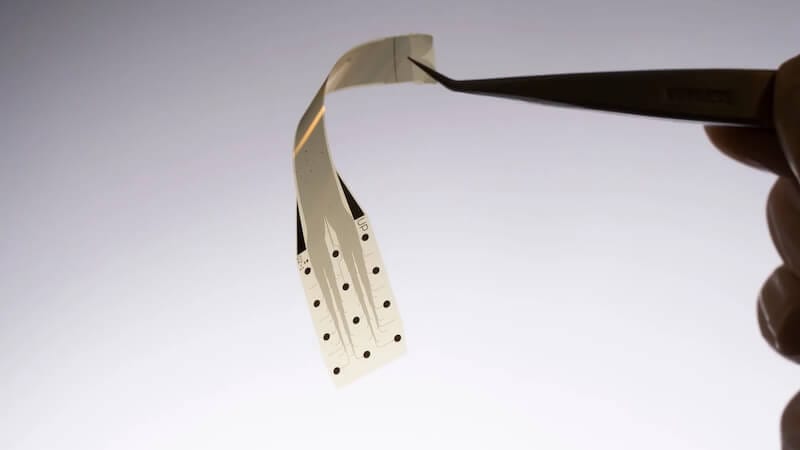
Researchers have developed a graphene implant and implanted it into a human to create a brain-computer interface. It detects brain signals and is intended to help treat neurological diseases such as Parkinson's.
Will we soon be able to interact with computers using our brains? The Spanish company InBrain Neuroelectronic is pursuing this goal, among others. For the first time, they successfully tested a new ultra-thin brain implant made of graphene in a human. This is a material consisting of a single layer of carbon atoms and is considered a miracle material.
Because graphene is not only the thinnest, but also one of the strongest materials in the world. InBrain Neuroelectronics developed its implant, among other things, to be able to record and decode signals from the human brain.
Graphene implant delivers promising results
Doctors placed the implant on a patient's cerebral cortex for 79 minutes during surgery. He had already undergone an operation to remove a brain tumor and agreed to take part in the experiment. In around 80 minutes, the device was able to distinguish which areas of the brain were healthy and which were affected by the tumor.
This shows how precisely it works – at the micrometer level. However, the procedure should not remain a one-off experiment. InBrain plans to further develop the system as a kind of brain-computer interface. Then it could help treat neurological diseases such as Parkinson's.
Graphene offers many advantages compared to metal
In so-called deep brain stimulation, a method that researchers are already using to treat Parkinson's, the flexible graphene electrodes could enable more precise and personalized stimulation. Compared to traditional metal electrodes, which are often stiff and inflexible, the graphene implant adapts better to the soft and pulsating structure of the brain.
This prevents potential damage from rigid electrodes that can irritate the surrounding tissue. Graphene also conducts electricity better than metal, which increases the efficiency of the implant. The approach could represent a promising technology for the treatment of neurological diseases.
Also interesting:
Source: https://www.basicthinking.de/blog/2024/10/15/graphen-implantat/


